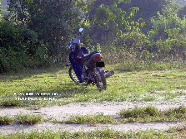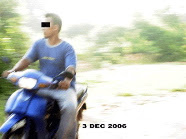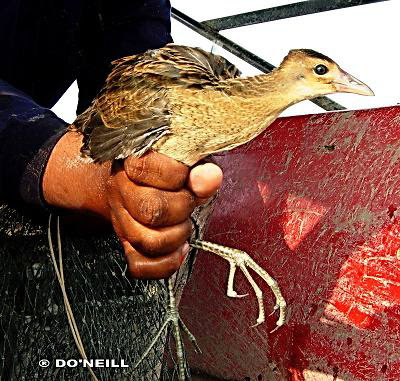This is a short account of some of my personal experiences with bird trappers and how I dealt with them in exchange for freedom of the birds caught and perhaps saved some poachers from falling foul of the law.
1. When to approach a poacher/trapper and when not to do so:
Each situation is unique. Usually a poacher or trapper is a male and if he is found in a somewhat deserted environment or he looks a rough, tough sort of guy and I happened to be birding alone, I would avoid eye contact and make for a quick exit as though he wasn’t there.
I would be hiding in some bush or undercover and looked to photograph his identification. Such as, his mode of transport, his face profile, in the act of setting up traps or with the poached bird.
Photography is great as it shows the official time and date the image is taken. Confrontation with a poacher or trapper that compromises my safety is the last I want to be embroiled in.
2. My identification and who I represent:
When I bird alone, which I prefer to do a lot, I would usually adorn a prominent identification tag that shows my name and the society I belong to. This is so especially when I visit the villagers for it gives them the assurance that I, as a lady birder, am there to watch and study birds only and come with good intentions. The villagers usually reciprocated well with a warm welcome.
This identification tag no doubt small, says it all with no further explanation needed to justify oneself. It is also effective to ward off the guilty conscience, ill intended ones who fear to confront me at the sight of the tag, regardless of whether the poacher or trapper can read or not.
I make a point to wear the tag with confidence and uphold myself to be a good representation of who I belong – no different a feeling from school days when one puts on a Prefect’s badge, wears a Prefect tie and adorns a School Prefect’s blazer and lead by good examples.
This method saved two juvenile water birds from the cooking pot that I found in fishing net of a tractor driver, ploughing the fields.
He saw a lady approaching him with a scope, binoculars and an identification tag round her neck. A friendly discussion issued. I took some opportunity identification shots. He meekly surrendered the Watercock (Gallicrex cinerea) (above) and Slaty Breasted Rail (Gallirallus striatus) (bleow) and we gave the birds freedom.
3. Advise with visual aid – Copy of Wildlife Protection Laws:
Approaching any trapper or poacher is always done at own risk and I make a point to weigh it well that I am confident to approach the trapper in a friendly way and able to win him over with friendly advice for his sake.
The use of a Copy of the Wildlife Protection Laws by flipping the pages, standing beside him to make sure he sees all those listed protected birds (above). Big words, penalty and jail sentences that confronts him is enough to shrink his pupils.
The result is promising with young trappers who on one occasion thanked me for briefing him and left never to be seen again. (A Copy of the Wildlife Protection Laws can be had in any state library of Malaysia for a small photostatting fee).
4. Report to relevant authorities with proof of photographs:
Photographing trappers and poachers are best done discreetly without their knowledge as the fear of them being reported to, drive poachers’ nuts and they will not hesitate to become verbally and physically abusive to defend themselves. (Their strategy of attack is best form of defence).
Having obtained all the evidence I required, the Branch Chairman of my Society is informed and all information required with photographs are posted to him to make a quick report to the Forestry Department.
The recent prompt action by Enforcement Officers in the Forestry Department to remove mist nettings found in the vicinity of the rare vagrant visitor, Common Hoopoe (Upupa epops) in Penang State is an example of good and effective co-ordination from prompt reporting, action and follow through.
It is a good feeling to know, the Common Hoopoe is saved from potentially flying into the net (below). The rare bird was seen again after the mist nettings were removed- two days after my reporting.
As I mentioned, it is only a personal account of what I do in small ways to save birds single-handedly. Others may do better in their different ways – their way.
Some may say, I try to police others or impose others to think my way or whatever code of birding conduct I may drum up and call them ethics to dictate to others.
Say what they will, I am only answerable to the call of birds that continue to reward me with numerous rare sightings and fellow birders who truly love, respect and care for the avian of the wild have all my due respect.
SUBMITTED BY DAISY O’NEILL (Avian Writer), PENANG, MALAYSIA,
















